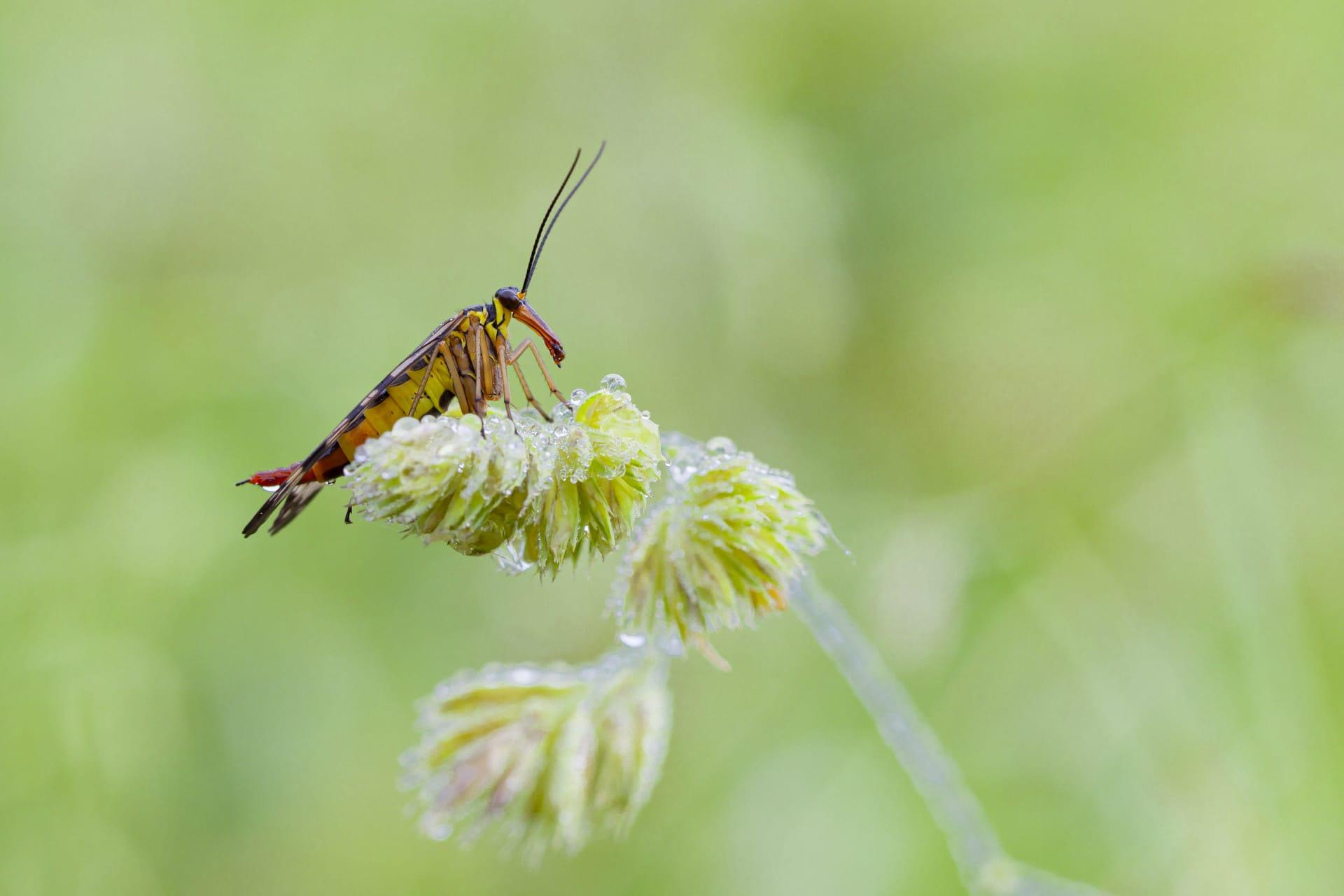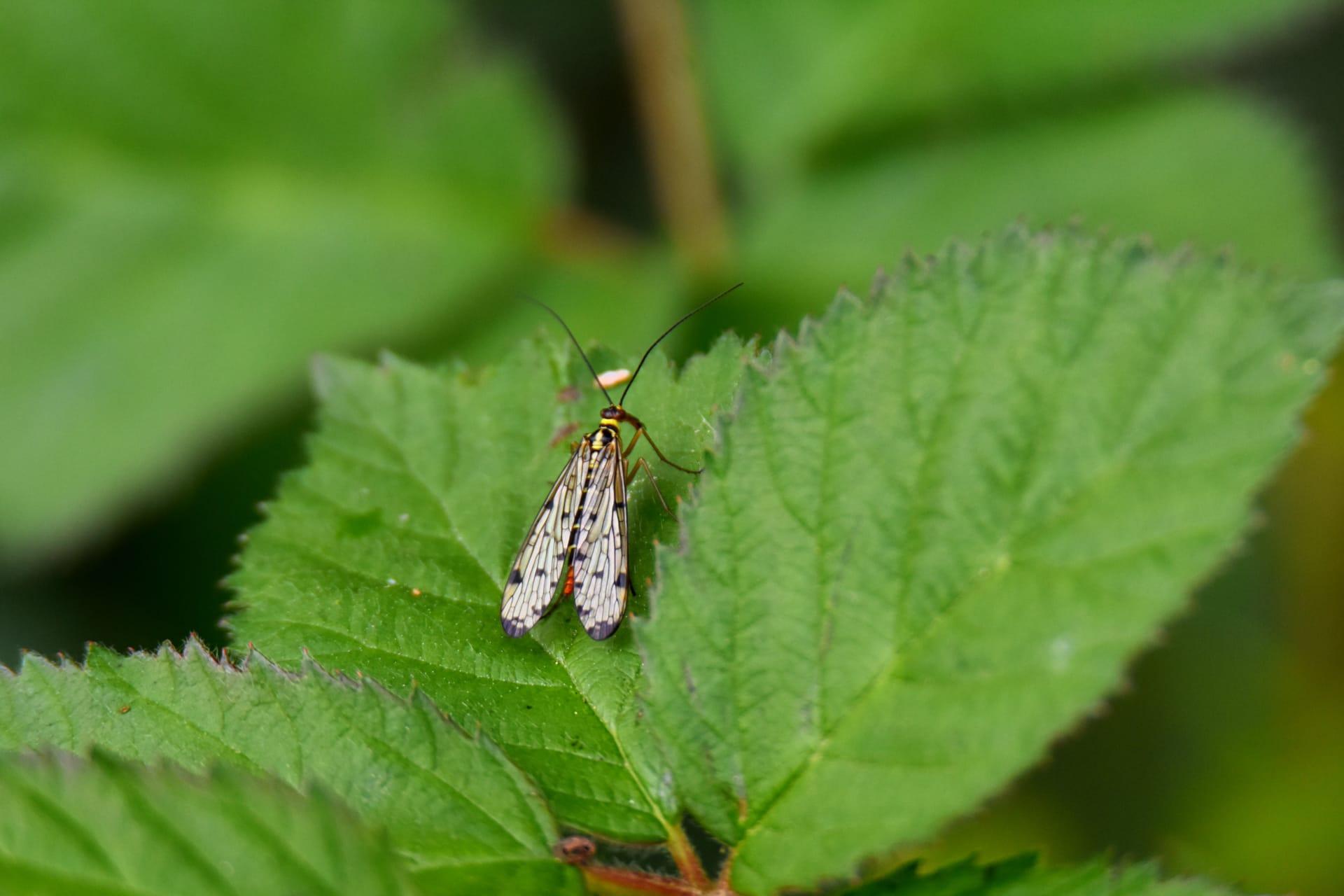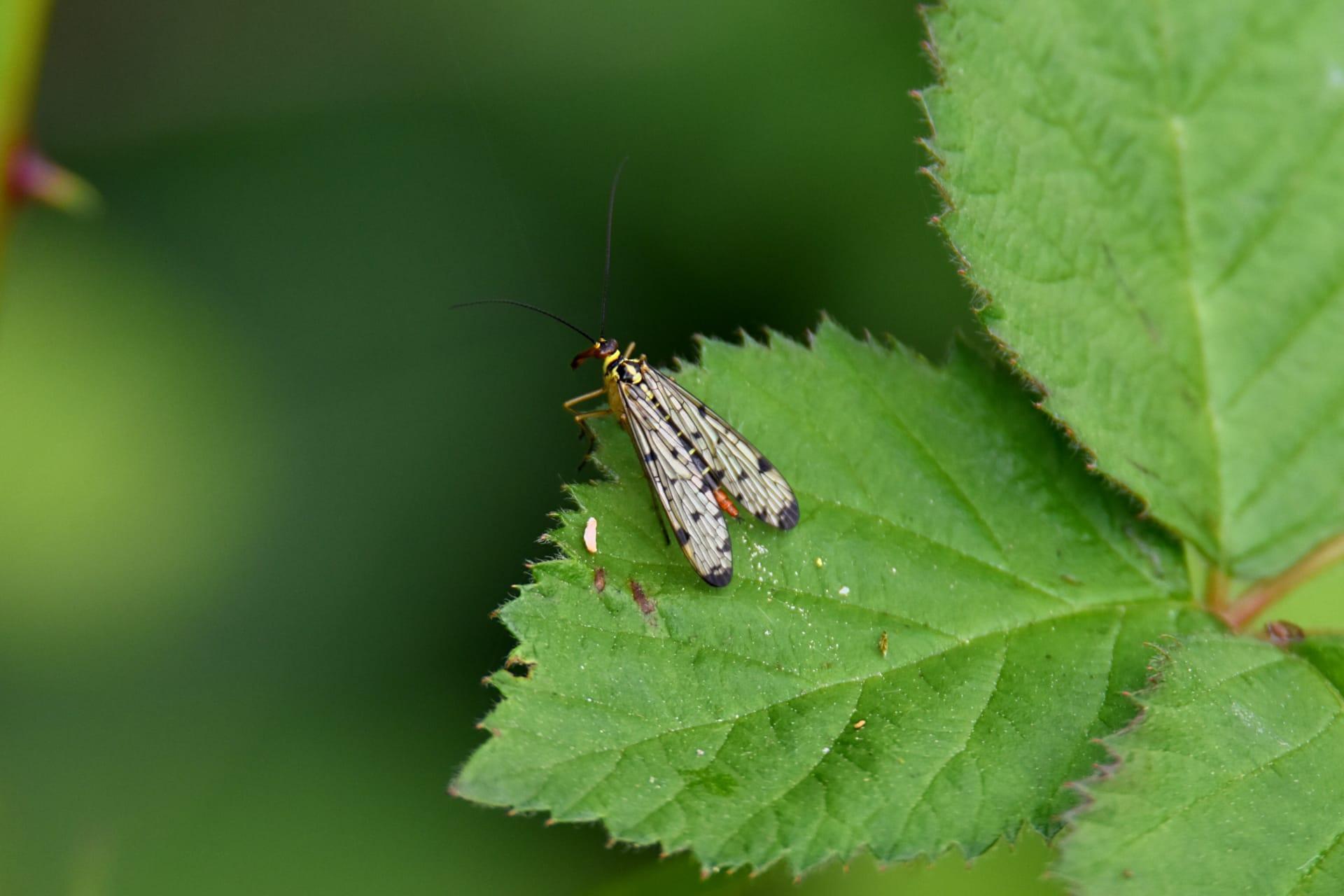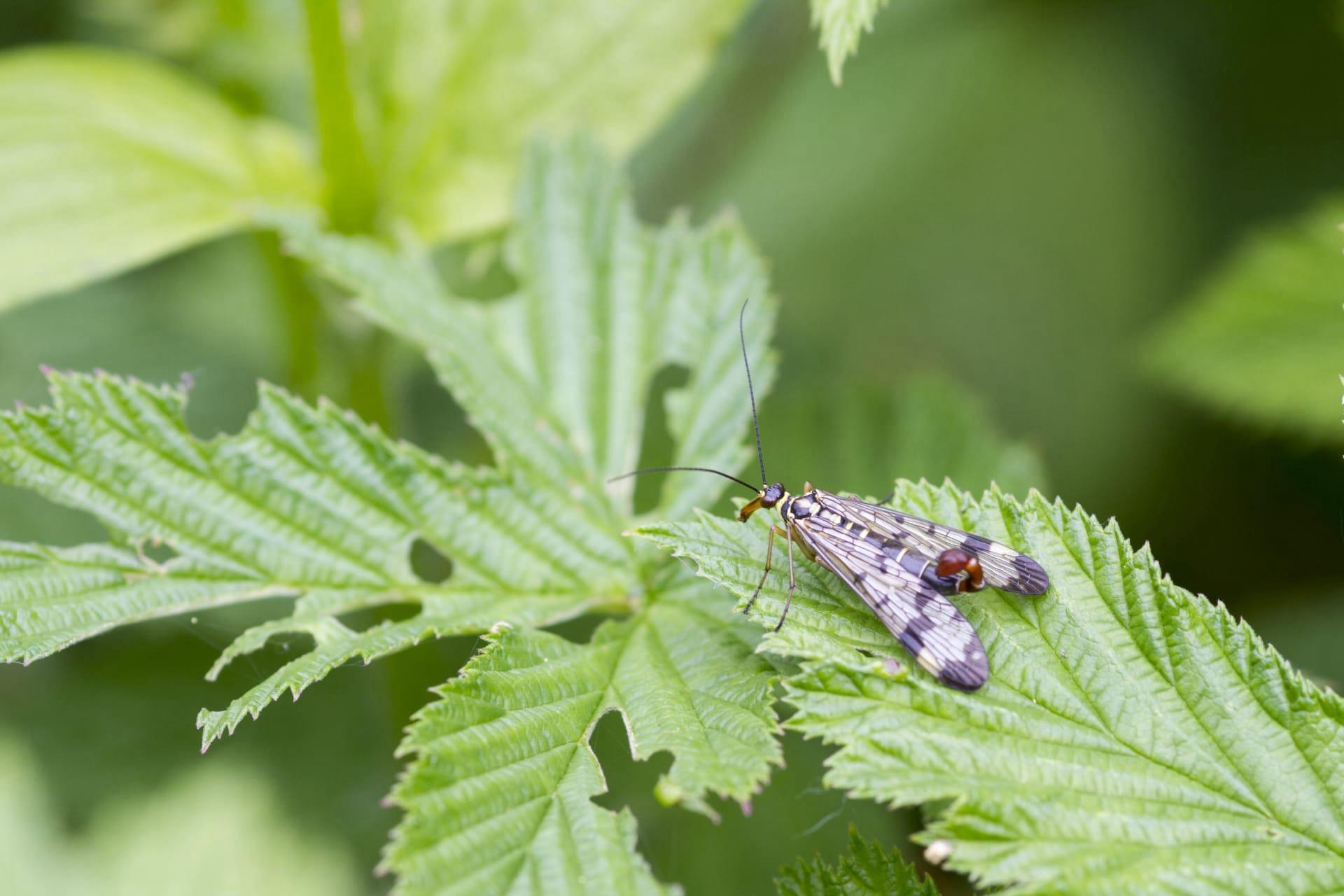Scorpion Fly Characteristics
- Home /
- Mini Encyclopedia /
- Animal /
- Scorpion Fly Characteristics
1
Scorpion flies, known scientifically as Panorpidae, are a group of insects with a fascinating array of physical characteristics. These flies typically measure about 0.8 to 1.2 inches in length. Their lifespan, although varying across species, usually spans approximately one year. The most notable physical feature of scorpion flies is the male's tail, which resembles a scorpion's stinger. However, this tail is not venomous; instead, it is used during mating rituals to impress females.
The male scorpion fly's tail is not only visually unique but also serves a critical function in reproduction. This tail curls over the male's back, ending in what looks like a stinger. During courtship, the male presents food to the female, which he holds with his tail. This behavior is part of a complex mating ritual where the gift of food plays a central role. The tail's structure, with its gripping and holding capability, is essential in this process.

2
Question: Why do scorpion flies have a scorpion-like tail?
Answer: The scorpion-like tail of male scorpion flies is primarily for reproductive purposes, not defense or attack. During mating rituals, males use their tail to present a nuptial gift, usually prey or a saliva secretion, to the female. This unique tail, resembling a scorpion's stinger, helps the male hold and offer this gift. It's a part of their courtship behavior, crucial for attracting a mate. Despite its intimidating appearance, the tail is completely harmless to other creatures.

3
Scorpion flies are known for their distinctive locomotion. They are primarily flyers but can also walk with a characteristic jerky motion. Their flight is not particularly fast or agile, distinguishing them from more adept flying insects. They tend to flutter in short bursts, which aids in navigating through their typical habitats, like dense vegetation.
In terms of feeding habits, scorpion flies are predominantly scavengers. They feed on dead or dying insects and occasionally on plant material. Their diet also includes nectar and rotting fruit. The mouthparts of scorpion flies are elongated and beak-like, enabling them to feed on a variety of food sources. This adaptation is particularly useful for consuming soft-bodied insects or decaying organic matter.

4
Scorpion flies primarily inhabit moist, shaded environments. Common habitats include forests, hedgerows, and areas with abundant leaf litter and undergrowth. These environments provide them with ample food sources and shelter. They thrive in areas with high humidity and avoid dry, open spaces.
Reproduction in scorpion flies involves unique mating rituals. Females lay eggs in soil or on plant material. The larvae are caterpillar-like and undergo several moltings before reaching the pupal stage. The mating process is particularly notable for the male's use of nuptial gifts, as previously mentioned. These rituals, along with the specific environmental requirements for egg-laying and larval development, highlight the complex life cycle of these insects.

5
Book: "The Secret World of Scorpion Flies" by Dr. Helen Smith. This book, published in the United Kingdom in 2010, provides an in-depth exploration of scorpion fly behavior, ecology, and physiology. Dr. Smith, an entomologist, delves into the unique characteristics of these insects, with a focus on their mating rituals and life cycle.
Book: "Insects of the Forest Floor" by Prof. James O'Connor. Published in the United States in 2015, this book includes a chapter dedicated to scorpion flies. Prof. O'Connor discusses the role of scorpion flies in forest ecosystems, their feeding habits, and their importance in the food chain. The book is a comprehensive guide to the various insects inhabiting forest floors, with scorpion flies being a notable mention.